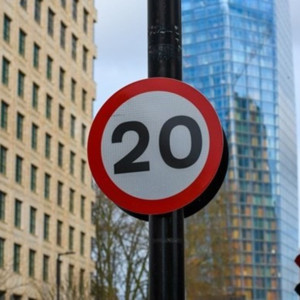Majority of drivers admit to breaking motorway speed limit

The majority of drivers admit to breaking the speed limit on the motorway more often than on any other type of road. The RAC found more than half (58%) of drivers admit to going above 70mph 'frequently' or 'occasionally', up from 57% in 2023. The proportion of drivers who admitted to speeding on 60mph roads also rose to 47% from 45%, and on 30mph roads to 42% from 40% in 2024.
Eight-in-10 (81%) drivers say they regularly see people 'excessively speeding' on all types of roads. While 82% report noticing other drivers breaking the limit excessively on motorways and high-speed dual carriageways, 80% say it is also a common occurrence on 30mph or 20mph roads. Department for Transport (DfT) statistics[1] show that 'exceeding the speed limit' was a contributory factor in 304 (21%) fatal collisions.
Meanwhile, separate figures from the Home Office published in December[2], revealed there were almost 2.7 million motoring offences[3], excluding data from the Metropolitan Police Service (MPS), recorded in 2023, an increase of 11% compared with the previous year (2.4 million), and the highest recorded since comparable records began in 2011. More than four-fifths (86%) of recorded motoring offences were for speeding (2.3 million), up 10% on the previous year (2.1 million) and the highest recorded since 2011. Between 2011 and 2023, the number of speed limit offences increased at a faster rate than the amount of road traffic in Great Britain.
Non-compliance increase on 20mph roads

The RAC's research around speed limit compliance saw the sharpest increase on 20mph roads, where 50% of drivers say they have broken the limit, up from 46% a year ago. This also reflects a trend over a longer period, with 36% of drivers in 2018 saying they frequently or occasionally broke the 20mph limit. RAC road safety spokesperson Rod Dennis said: "It's concerning that our research indicates excessive speeding has become so commonplace because the consequences are very severe - a fact borne out by government data showing it contributes to 21% of all fatal collisions.
"It is particularly worrying that so much excessive speeding observed by drivers appears to take place on 20mph and 30mph roads as this is where the greatest number of vulnerable road users, such as pedestrians, cyclists and e-scooter riders, are." Figures from the RAC's 2024 Report on Motoring also show that many drivers appear to see the speed limit as a target, with seven-in-10 drivers (72%) saying they try to drive as close to the speed limit as possible. Furthermore, more than half of all drivers (55%) believe there is a culture among UK road users that it is acceptable to break the speed limit, with only 23% disagreeing with this assertion.
"We badly need to bring an end to excessive speeding to keep us all safe," continued Dennis. "The Government is working on the country's first road safety strategy for many years, so we hope that tackling this will be treated as a priority." The increased use of average-speed cameras is perceived to be the most popular way to tackle the problem of speeding, with 39% of drivers backing this idea. The introduction of radar-activated signs that display the relevant speed limit against drivers' actual speed is second, supported by 36% of all drivers.
Three-in-10 drivers (31%) would like to see better speed limit signage and a similar proportion (30%) say sat-navs or in-car systems should alert drivers when they exceed the limit, a feature which many new cars already have.
Only a quarter of drivers (26%) would like to see more extensive use of mobile speed cameras, while a fifth (21%) support more severe sentences for those who drive above the speed limit.
References
- ^ Department for Transport (DfT) statistics (www.fleetnews.co.uk)
- ^ separate figures from the Home Office published in December (www.fleetnews.co.uk)
- ^ 2.7 million motoring offences (www.gov.uk)